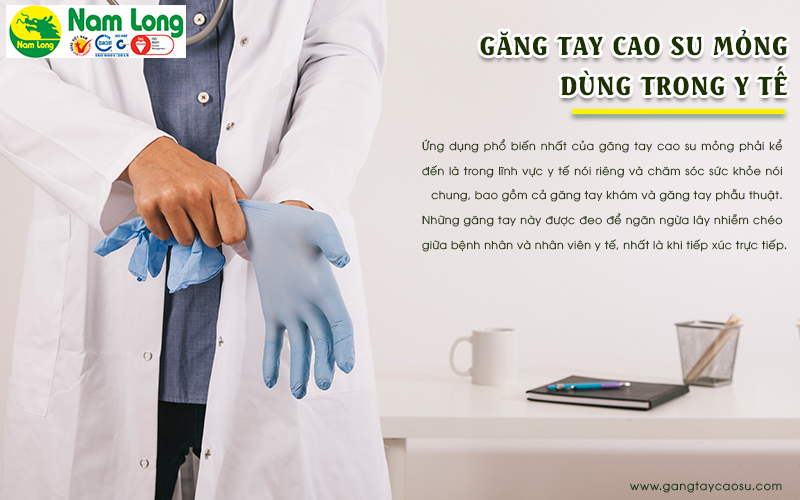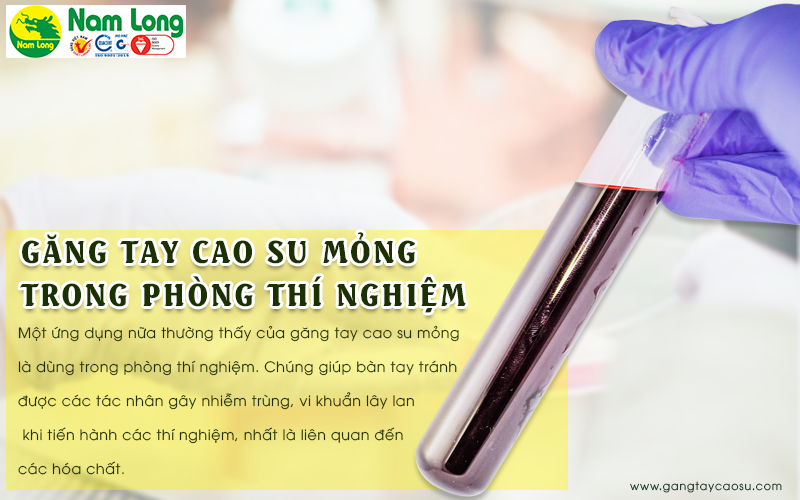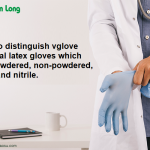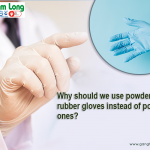Thin rubber gloves are widely used in many different areas. However, not everyone knows all about its uses, especially some interesting tips of its.
1/ Thin rubber gloves for medical use
The most common application of thin rubber gloves which should be mentioned about is the use in medical and health care, including examination gloves and surgical gloves.
These gloves are worn to prevent cross-infection between patients and medical staff, especially in direct contact. These thin rubber gloves are often called disposable medical gloves which are made from natural rubber (Latex) or synthetic rubber (Nitrile).
Thin rubber gloves which are used in medical are approved by the FDA after being tested for leakage, puncture, durability and safety levels. ou will easily see them when you see doctors, surgeons, nurses, carers, dentists and other health workers.
2/ Thin rubber gloves used in food processing, hotel services.
Also aimed at preventing bacteria, cross-contamination to food, thin rubber gloves in form of disposable latex gloves are applied in food processing and hotel services. They will usually be white to confirm the level of cleanliness and sterility in the service industry.
3/ Thin rubber gloves for laboratory use
Another common application of thin rubber gloves is in the laboratory. They help hands avoid infectious agents, bacteria spread when conducting experiments, especially in relation to chemicals.
4/ Thin rubber gloves used in tattoo art
If you’ve ever worked with a tattoo artist, you’ll see they use thin rubber gloves. This helps protect themselves from the effects of direct contact with blood. Moreover, the design of thin rubber gloves embraces their whole hands, increasing the accuracy and sensitivity of performance, especially those who need high precision in work such as surgeons or tattooists.
5/ Thin rubber gloves support gardening.
Normally, when gardening, people will use thick rubber gloves, or cloth gloves to avoid scratches during work. However, for some tasks such as soil preparation, fertilizer, and tree pruning that require the sensitivity of the hands, thin rubber gloves can do better sometimes.
6/ Thin rubber gloves used in purification and product quality inspection
The process of purification and quality control of products can be exposed to toxic and dangerous substances for hand skin. Therefore, for some items, workers need to be supported with thin rubber gloves, in order to ensure safety and not thwart the product inspection process.
7/ Thin rubber gloves used in the automotive industry
Thin rubber gloves are also used in the automotive industry, supporting repair work. For this work, nitrile rubber gloves are favored because of their smoothness when changing oil or handling a strong degreaser.
8/ Thin rubber gloves used for cooking
Thin rubber gloves will sometimes be a great help for housewives. They make it easier to tear a chicken off without fear of unsanitary.
Rolling dough also becomes easier with a pair of thin rubber glove, or at least they will help you not have to remove the ring on your hand when cooking.
9/ Thin rubber gloves used in garment industry.
Many people will be surprised about this use of thin rubber gloves. This is even thought as a trick and often applied in some garment units, especially for delicate fabrics to avoid getting dirty by rough hands when sewing or fabricating. Therefore, this application is not too popular.
Thin rubber gloves are increasingly popular, especially disposable ones because of their convenience. However, you need to choose quality products and should not abuse them when buying, because of their lack of environmental friendliness compared to other thin rubber gloves.











